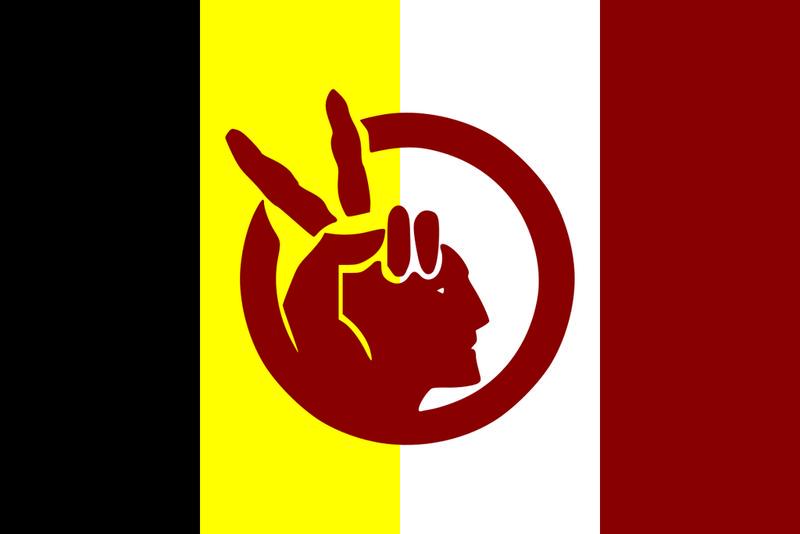The Red Power Movement: Native American Civil Rights In The Groovy Era
By | December 6, 2021


The NCAI Was One Of The First Steps Towards The Movement
Earlier, in 1944, the National Congress of American Indians (NCAI) was established and became the first Indian-run multi-tribal political organization. The organization fought voting discrimination, the dissolution of governmental relationships between tribes and the federal government, and governmental interference in tribal councils. In addition, they tried to close gaps between different tribes and between those who lived on the reservations and those who lived in the cities. The NCAI was the major predecessor for the Red Power Movement, which was comprised of a number of organizations.

Militant Groups Begin To Form
In 1971, the National Indian Youth Council (NIYC) was founded by college students and recent graduates. They were one of the first organizations after NCAI and were militant opponents of the Bureau of Indian Affairs. They also fought for federal tribal recognition and the reinstatement of tribal governance. Following NIYC, the American Indian Movement (AIM) was founded in Minneapolis in 1968. A militant organization, the leaders were young, and it represented mainly urban Indians. At first, AIM worked for civil rights, monitoring law enforcement, and building a network of churches and organizations, as well as the “powwow circuit.” The circuit publicized protests around the country.

Other Organizations Form
A branch of AIM, Women of All Red Nations (WARN), was formed in 1974. They were focused on ending the forced sterilization of women and improving the inadequate health care on the reservations. They also got involved in custody battles and protesting mining companies whose practices poisoned food and water sources. Also in 1974, the International Indian Treaty Council (IITC) was founded in Standing Rock, South Dakota. At the first gathering, more than 5,000 people gathered, and the organization became a voice for Indians throughout the Americas, the Caribbean, and the Pacific. In 1977, the IITC was the first indigenous organization to be granted Consultive Status by the UN Economic and Social Council where they represented the concerns for the rights of indigenous people.

They Started By Occupying Alcatraz
From its beginnings in 1969, the Red Power Movement used social protest to bring attention to their goals, which included honoring treaty obligations, alleviating poverty, and allocating resources for education, housing, and healthcare. They also wanted Indian participation in social institutions. Additionally, they advocated for the founding of Indian colleges institutions to celebrate Indian culture and contributions.
On November 20, 1969, more than 80 American Indians identifying themselves as Indians of All Tribes (IAT) began the Occupation of Alcatraz, and although they failed to accomplish their goals and the occupation was completely over by June 11, 1971, they did succeed in helping to catalyze the Indian community. In 1970, they occupied US military surplus land near Davis, California. Before the occupation began, they had applied for the land to establish a university, but they lost it to UC Davis, in spite of UC Davis’ incomplete application. The youth hopped the fence and were granted a deed in April 1971, making D-Q University the first tribal university in California. Although they gained accreditation in 1977, they lost it in 2005.
In August 1972, they began the trail of broken treaties, which started with seven caravans traveling to Washington D.C. with a list of twenty demands for the BIA. Because of a misunderstanding, they overpowered security at the BIA and took over the building, breaking the furniture to use as barricades. The occupation began on November 2, the week before a presidential election, which led to media coverage. Although the police threatened the occupiers with violence, supporters formed a human barricade to keep the police out. On November 8, the occupation ended, and the occupiers took paintings and artifacts, leaving behind $2 million in damage.

Wounded Knee And The Longest Walk
The next incident began on February 27, 1973. During the Wounded Knee Incident, which lasted 71 days, more than 200 Indians took over the town of Wounded Knee, South Dakota, in support of the Oglala Sioux people of Pine Ridge Reservation. The Oglala Sioux Civil Rights Organization unsuccessfully tried to impeach Dick Wilson and asked AIM for support. During this occupation, the protestors and federal agents had shootouts at night; two Indians were killed, and one federal agent was permanently paralyzed. Though the Wounded Knee Incident ended on May 8, 1973, throughout the 1970s, the protests continued, culminating in 1978 with the Longest Walk, although a second Longest Walk occurred in 2008 to continue to draw attention to American Indian concerns.

The Successes Of The Red Power Movement
By the end of the 1970s, the Red Power Movement had achieved many of its goals. The Indian Self-Determination and Education Assistance Act of 1975, which reestablished federal tribe recognition, was one of a number of laws passed. Other laws provided more funding to schools with large numbers of Indian children, worked to improve healthcare, protect religious freedom, and establish community colleges on reservations. Indian Studies programs were established, and tribal museums opened. The National Museum of the American Indian was authorized in 1989 and opened on the National Mall in 2004.
